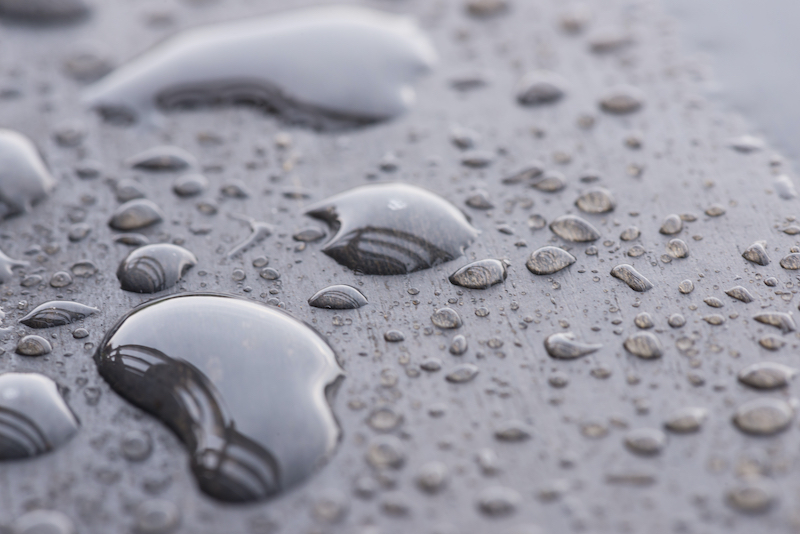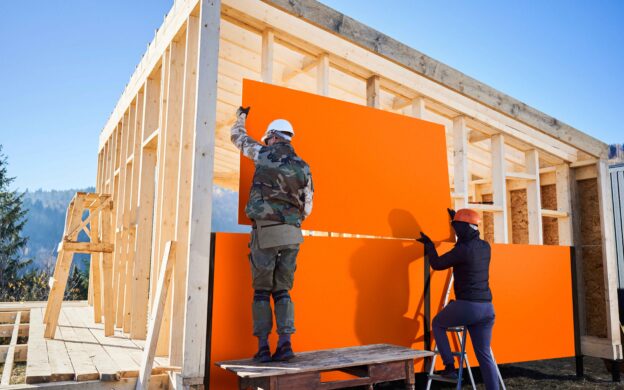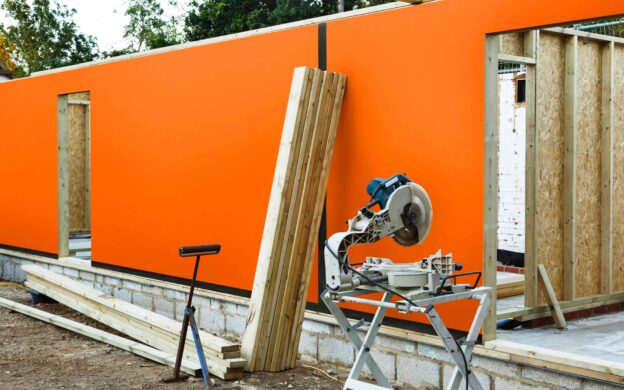
Traditionally, laminates such as paper, melamine films, polyethylene, fibreglass, reinforced plastic and metals were fixed to timber manufactured products to achieve the desired texture. The ground-breaking Arctek performance overlay technology, by Arclin, is a high-performance overlay solution that offers more than a texture improvement. It is trusted by timber manufacturers worldwide to improve the moisture resistance of their products and protect them from the elements.
Arctek overlays come in a variety of colours and textures, including a smooth surface that helps create a uniform finish for a larger application designed for aesthetic impact. The overlay solutions can be formulated to form a primed base that makes the application of finishing layers easier and improves the compatibility of the products.
Do overlay panels come in different thicknesses?
OSB is available in thickness from 6-28.5mm whilst plywood thickness ranges from 4-21mm but in theory 100mm can be supplied by some manufacturers. Plywood is also available in a variety of grades that reflect the quality of the board.
The specification of an overlay panel will depend on the application and the design of the support structure. In general, 9mm OSB is used for walls, 11mm for inner roof boarding and 18mm for floors or loadbearing ceiling panels. The greater the load and the wider the spacing, the thicker the board will need to be. The higher grade of plywood is generally used for decorative application or furniture making, the lower grades are used in construction and for packaging.
OSB is often used for premanufactured building components such as structural insulation panels (SIP) and roof and wall cassettes. The thickness of the OSB used will depend on the component manufacturer but 15mm is commonplace for both 142mm and 172mm SIPs. The thickness of OSB used in cassettes will depend on the location of the cassette and the distance of the supporting frame members.
How are overlays fixed to the panel?
To fit a laminate over an OSB or plywood requires smoothing of the surface. This can be done by sanding, although OSB does not sand well, and this may be quite a laborious process. Some laminates that are adhered may require the board to be primed for better component compatibility.
Arctek Technology is thermally fused with the OSB or plywood during the manufacturing process. This ensures a strong, homogenous bond of the overlay solution with the board that extends the design life and minimises the risk of the overlay coming apart from the substrate.
Can overlaid panels be used for sarking?
Overlaid panels have a variety of applications, including sarking, also known as sheathing. As already mentioned above, the use of heavier laminates may require additional structural support.
Sarking provides a level of insulation for a building and an Arctek performance overlay technology is designed to minimise air leakage can improve the performance of the sarking board and further increase the U-value of the structure.
Arctek performance overlay technology offers moisture protection and vapour control – a notable performance enhancement. OSB3 is generally recommended for use in sarking as it has a level of water resistance, but this does not protect the board from extended exposure to moisture or longer spells of bad weather on site. Arctek performance overlay technology solutions can protect the board from moisture penetration that could damage its structural performance. The protection extends the design life of sarking. It also makes the build phase less weather dependant, saving time and simplifying the trade on site scheduling.
To find out more information on how Arctek performance overlay technology can improve the performance of OSBs, plywood and other timber manufactured products, contact us.


